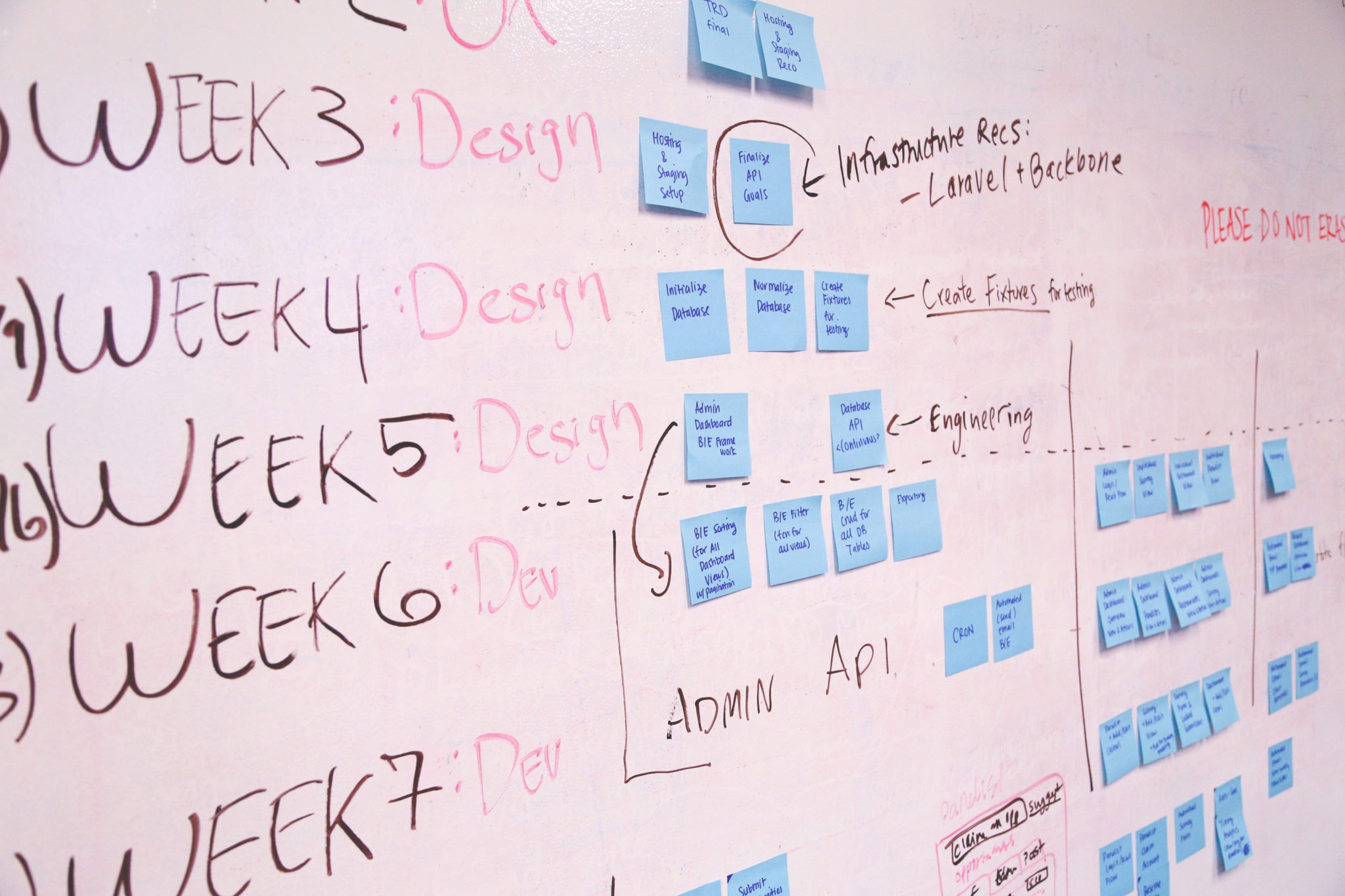Mentoring programs are a fantastic way to provide support, guidance, and growth opportunities for everyone. It’s also a great way to improve retention rates, increase productivity, and build a more positive organizational culture. But building and running a successful mentoring program is not always easy. It takes time, planning, and effort. And since we’ve helped hundreds of organizations run their mentoring programs, we want to share our top 10 mentoring program best practices to help you establish and run a successful mentoring program that delivers tangible results.

1. Ensure You Have Management Buy-In
It’s critical to have management on board when launching a mentoring program. Without management buy-in, your mentoring program may struggle to gain traction or sustain itself over time. Your potential participants may feel that the program is all lip service and doesn’t really have the organization’s support. It’s also difficult to get the resources you need to support your program if you don’t have the backing from your organization’s leaders.
Get support from senior executives and other key stakeholders. Make the case for why mentoring is important and how it aligns with the organization’s goals and objectives and be clear about the work needed to ensure success. Clearly communicate the structure and mechanics of the program so you can build trust and support with management. This will help you secure funding and resources as well as give you a good set of mentoring champions to lean on when the time comes to promote your program and recruit participants. This also helps build a sense of ownership and investment in the program among management, which can help ensure its success.
Preparing to make your case to your organization’s leadership? We’ve got you. Download our mentoring proposal template and make a pitch that management can’t reject:

It is also important to address any concerns or objections that management may have about the program. For example, they may worry about the time commitment required or the potential for mentor-mentee relationships to just fizzle out over time. By addressing these concerns and providing solutions, you can alleviate their worries and gain their support.
As the program runs, regularly communicate with management about the progress and impact of the mentoring program. This will help them see the value of the program and continue to support it over time.
2. Focus On What Success Looks Like
On the list of mentoring program best practices, this one is arguably the most consequential. You need to define clear goals, metrics, and outcomes that you want to achieve. This is important because it allows you to create a plan of action that is tailored to your specific needs and goals. It’s important to do this right from the start.
Are you looking to improve employee retention rates? Increase productivity? Develop future leaders? Whatever your goals may be, make sure they are clearly defined and communicated to all stakeholders. That means everyone involved has a clear picture of the mentoring program’s goals, as well as the program structure, content, activities, and the method that will be used to measure it.
With your goals in mind, develop clear success metrics and KPIs that will allow you to measure your program’s progress and success over time. This may involve tracking metrics such as employee engagement, retention rates, or increased job satisfaction. By regularly measuring and analyzing these metrics, you can identify what’s working well, and where you may need to make some adjustments.
Another important factor to consider when developing your success metrics is the impact your mentoring program is having on individual participants. Are they developing new skills or knowledge? Are they feeling more engaged and motivated at work? By gathering feedback from participants, you can gain valuable insights into the effectiveness of your program.
We collect feedback and provide insight into the health of a mentoring program a bit differently here at Mentorloop. 😉 Watch this video to learn more:
Finally, it’s important to remember that mentoring programs are not one-size-fits-all. What works well for one organization may not work as well for another. As such, it’s important to continually evaluate and refine your program to ensure that it is meeting your goals and objectives. By doing so, you can help ensure the long-term success of your mentoring program.
Learn about how Mentorloop helps you make sure your program is tracking towards success:
When you focus on what success looks like, you are setting yourself up for success. By defining clear goals and outcomes, you are able to better understand what you want to achieve and how you can get there. And the natural consequence of that is that you’ll know what and where to adjust along the way should you need to.
3. Get Matching Right
The mentor-mentee connections within a program is one of the most crucial parts of a mentoring program. So it’s no surprise that our tips for mentoring program best practices include nailing the matching process.
Every program coordinator should invest time and energy in building a strong matching process that considers each participant’s skills, personality, and career aspirations. On top of this, it’s highly beneficial to the program and the participants if the matching process is equitable and inclusive. Mentors and mentees benefit from being exposed to a wide variety of backgrounds, experiences, and perspectives. Besides, the benefits of a mentoring program are dampened if the matches are so similar to each other anyway.
So think about your goals. Are you looking to provide skill-specific guidance, or are you hoping to create a more general support system for mentees? These goals should inform the criteria and method you use for matching your mentors and mentees, not their demographic profiles. Alignment in things like goals, specializations, and areas of interest is more beneficial to a mentoring pairing than shallow similarities. If they have some common interests or hobbies to break the ice with, even better.
To learn more about matching criteria, download our ebook, 5 Key Ingredients to Successful Matching:

Pro Tip: We know it’s hard to ensure equitable matches while being efficient in running your mentoring program. So consider matching your cohort using Mentorloop’s Smart Match. The algorithm that powers Mentorloop’s Smart Match allows you to match your participants using criteria that’s relevant to your program goals while allowing you, the program coordinator, to make matches using your own predetermined criteria in minutes, saving you time and effort, and removing unconscious bias from your mentoring program.
Learn more about the matching types available on Mentorloop:
Remember that no matter how closely you follow mentoring program best practices, no mentoring program’s matching goes perfectly. So don’t fret if some matches don’t work out. Troubleshooting your matches is part of running a mentoring program and having matches that don’t work out is not a reflection on how well you’re running your program.
4. Get People Excited
Generate excitement and enthusiasm among your potential mentors and mentees upon launch. After all, the more excited they are, the more likely they are to participate in the program and benefit from it. So, create a buzz around your mentoring program! Here are a few ideas on how you can do that:
- Highlight the benefits: Make sure everyone knows the benefits of participating in the program. Whether it’s career development, skill building and knowledge sharing, or networking opportunities, be sure to emphasize the advantages of taking part in the program. Is your mentoring program focused on a particular field (e.g. tech? finance? sales?) or goal (e.g. getting more members of underrepresented groups on the path to leadership)? Get specific about it! The more potential participants see how the program can be beneficial to their personal circumstances, the more they’ll be encouraged to join.
- Share success stories: Nothing is more inspiring than hearing about the positive impact of a mentoring relationship. Share success stories from past mentoring programs to show how the program has helped others achieve their goals. Invite mentoring champions to talk about their experiences with mentoring. This could be a former mentee who has gone on to achieve great success or a mentor who has helped someone else achieve their goals. Hearing from these individuals can be incredibly inspiring and motivating for those who are considering participating in the program.
- Host launch events or info sessions: Launch events or information sessions can be a great way to generate excitement and interest in the program. Consider hosting a launch event to kick off the program, or an information session to answer any questions employees may have.
- Encourage senior leaders to share their experiences: Senior leaders can be great advocates for the program. Encourage them to share their own experiences with mentoring and the benefits they have gained from it.
- Promote the program through internal channels: Make sure the program is promoted through internal channels such as newsletters, intranet, and social media. This will help ensure that everyone is aware of the program and has the opportunity to participate.
To learn more about mentoring program marketing and recruitment, download our guide:

5. Actively Engage Participants
Once your program is up and running, you need to keep participants engaged and committed. This is essential to ensure that they stay motivated and achieve their goals.
It’s important to communicate regularly with your participants to keep them engaged and motivated. This could mean sending regular newsletters or updates about the program or creating a social media group where participants can connect with one another and share their experiences. By creating a sense of community and connection among your participants, you can help them feel more invested in the program and more likely to stick with it over the long term.
Here are some of our best tips on how to actively engage your participants.
Goal-Setting Workshops
Goal-setting is an important part of any mentoring program. Encourage your participants to set specific, measurable, attainable, relevant, and time-bound (SMART) goals. Set up a workshop where mentoring pairs can go through this framework and set their goals together. This helps set expectations and promote accountability early which encourages participants to stay engaged with their mentoring partner and the program.
Regular Check-Ins and Feedback
Feedback is crucial to the success of any mentoring program. You can schedule regular check-ins with your mentees and mentors to discuss their progress and any challenges they may be facing. Encourage them to be honest and open about what’s working well and what needs improvement and let them know that their feedback will be used to make adjustments to the program and ensure that it meets their needs. You can also send regular emails or surveys to ask for this feedback.
Pro Tip: If you’re running your program on Mentorloop, there’s no need to keep on top of regularly asking for feedback and checking in. Mentorloop does this for you. Powered by our Sentiment Feedback Analysis System, Mentorloop collects feedback from your participants during key moments of their mentoring journey. So you get accurate, real-time data, not just on the number of meetings participants are having, but on the quality of their relationships, which is the most important thing.
Learn more about how Mentorloop helps you collect feedback:
Networking Activities
Giving your participants opportunities to branch out from their mentoring partners and meet other mentors and mentees is a great way to keep them engaged. Aside from the opportunity to network with individuals from different backgrounds and experiences, mentors can learn from other mentors that can help them in their existing mentoring relationships. Likewise, mentees can also learn from other mentees. These events are also opportunities to make peer mentoring connections and build Personal Advisory Boards.
For more ways to increase mentoring program engagement, watch this video:
6. Leverage Resources and Content
When it comes to mentoring program best practices, this is an easy one to implement. There are a plethora of resources and content available to support your mentors and mentees. Having these in your arsenal is a great way to keep your participants guided and supported, as well as keep them engaged.
Collect resources on topics such as goal setting, active listening, effective communication, or even cultural literacy. You can even give them some tools such as sample meeting agendas or guide questions for mentoring sessions. You can even suggest online courses or ebooks, videos, and blogs. There are tons of options out there. If you have the time, it’s also a great idea to provide mentors and mentees with toolkits and guides that outline mentoring best practices and strategies.
Resources like these are great to drip feed to your cohort throughout the program to help them stay on track and engaged. By leveraging resources and content in this way, you ensure that all participants have access to support and guidance. You also then create a mentoring program that is well-structured, effective, and efficient. This can lead to better outcomes for both the mentor and mentee, as well as the organization as a whole.
Pro Tip: If you’re running your program on Mentorloop, you can set your Recommended Reading for your mentors and mentees, and even for those who have signed up to be both. Mentorloop gives you the ability to put certain resources in front of your participants, then change them around as your program progresses. This allows you to keep your resources fresh for your mentors and mentees so they feel that they are learning and are guided throughout their mentoring journey.
Learn more about how Mentorloop helps you guide and support your participants, ensuring they maintain their mentoring momentum:
7. Monitor and Manage Throughout the Program
It’s important that you don’t just assess your program at the end and work on what to improve for the next cohort. Don’t be afraid to tweak and improve even as your program is running. This is something we always stress as mentoring program best practice.
If you’ve followed our advice to regularly collect feedback, then you’ll have a constant stream of insight on what needs your attention and adjustment. So don’t wait until the program is over to act on them. Mentoring pair not working out? Attempt mediation or rematch the participants. Engagement is a bit low? Try to ignite the cohort with a webinar or a networking event. Getting feedback about feeling a bit lost in the program? Adjust your Recommended Reading and send your cohort a bulk message about the new resources and guides available to them.
Pro Tip: If you’re running your program on Mentorloop, we empower you to act on feedback and data about your program through the way we surface relevant program information. The Insights on your Program Dashboard make your mentoring program data actionable and guide you on what actions you can take to make improvements.
To learn about what kind of mentoring program data we collect and why we do it a bit differently than the rest, watch this video:
8. Don’t Force It
While mentoring programs can deliver significant benefits, sometimes people aren’t ready for it or don’t have the capacity for it at the time that you’re running it. Don’t try to force people to participate who are not interested or motivated. Mentoring is most effective when it is voluntary and driven by the participants themselves. Instead, focus your efforts on those who are committed and willing to put in the effort required. Forcing people to participate or imposing rigid rules or expectations can create a negative or resentful atmosphere that will undermine the program’s success. Instead, focus on creating a positive, supportive, and flexible environment that encourages people to participate and learn.
Likewise, if you have participants that have been engaged before but have dropped off, don’t force them back into the fold if they truly have no motivation or capacity for mentoring at the moment. Life happens and situations change for mentors and mentees despite the best of intentions. So thank them for taking part, encourage them to touch base with their mentoring partner, and mark them as unavailable or remove them from the program. From there, you can rematch their mentoring partner. Also, make sure to communicate that the departing participant is welcome back should they find themselves with the time or motivation for mentoring again.
Pro Tip: An Always-On program is a great way to make sure that mentoring is available to your people when they have the time and motivation to dedicate to it. When people can come when they’re ready and go when they are too busy, it removes the pressure for people to sign up for the program when they may not be ready right now but are still interested in engaging in mentoring.
Curious about the different mentoring program recruitment styles and what 12 months looks like if you use them? Download our sample timelines:

9. Keep Human Connections Front and Center
Remember that mentoring is about building relationships and connections between people. Mentoring is ultimately a human-to-human interaction, and it is essential to keep this in mind throughout the program. Here at Mentorloop, we feel that when it comes to mentoring program best practices, this aspect isn’t talked about enough.
Emphasize building relationships, trust, and respect between mentors and mentees. Encourage regular communication among participants and create opportunities for informal interaction like a meet-and-greet lunch or after-work snacks.
Look for small wins within the program and recognize and celebrate these. 10 new people joined the program this week? Encourage everyone to welcome them! Likewise, highlight the accomplishments of your program participants. A mentee nabbed a promotion with their mentor’s guidance? Get everyone to send a “congrats” their way!
Pro Tip: If you’re on Mentorloop, your Program Dashboard helps you find these magic moments through your Highlights so you can easily celebrate your participants’ and your program’s wins – big or small.
All of these little things allow you to create a sense of community and togetherness within the program, as well as build a culture of mentoring within your organization.
10. Made Admin Easier With Mentoring Software
Running a mentoring program without mentoring software is inefficient and time-consuming. Program coordinators with no help from mentoring software get inundated with admin tasks like creating internal documents for the mentoring program; matching the mentors and mentees via spreadsheets; email back and forths with participants; feedback collection and reporting, etc. All of this is a heavy burden on program coordinators everywhere.
But when you run your program with mentoring software like Mentorloop, not only are these tasks made simple, but they’re also made more effective and more efficient. So instead of spending time working on admin and ensuring it’s being done well, program coordinators like you can spend time actually working on enacting mentoring program best practices.
At every stage of running a mentoring program, mentoring software can make a program coordinator’s life easier, allowing them to focus on the things that really matter (or even other jobs they need to do outside of the mentoring program!).
Mentorloop allows program coordinators to send out just one form to garner interest and create participant profiles, easily match people based on profile elements such as skills, goals, etc. or empower them to organize themselves into matches; gather feedback and communicate with all participants via the platform – and then sit back and relax as analytics and reports funnel through your monitor. All of this happens online in one spot. No spreadsheets – and no emails.
So if you truly want to focus on making sure you’re following mentoring program best practices, cutting down admin time and improving efficiencies using mentoring software like Mentorloop is something you should prioritise.
Curious to see how Mentorloop can help you do all this and more? Explore the platform:
So, yes, running a successful mentoring program can be tricky, but not if you do it with Mentorloop and follow these 10 mentoring program best practices.
Ready to run your best mentoring program yet?



